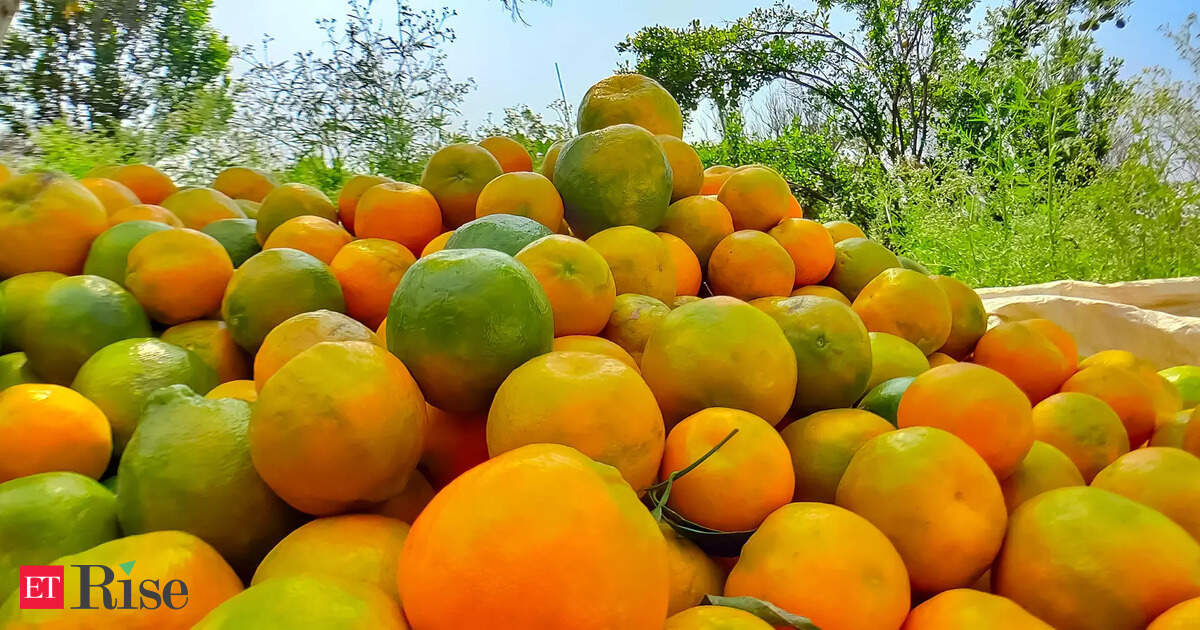Experts and industry stakeholders, however, assert that the orange industry must adapt to survive and grow, considering the challenges posed by climate change, which affects yield, quality, and sustainability, as well as geopolitical issues that influence trade, market access, and profitability.
Register here for Nagpur SME Summit
There is a need to highlight the unique characteristics of Nagpur oranges, improve storage, transportation, and logistics infrastructure, and ensure accessible financing for farmers and MSMEs, they say.
According to them, value addition through processing can help the orange industry overcome its challenges. By producing items like orange juice, squash, and marmalade, the industry can ensure year-round market availability, extend shelf life, and reduce wastage. Moreover, processing can create new income opportunities for farmers and MSMEs, leading to a more resilient, diversified, and profitable orange economy, they say.
For the uninitiated, the Nagpur orange is a variety of mandarin orange (Citrus reticulata) cultivated in and around the city. These oranges bloom during the monsoon season and are harvested in two distinct cycles each year. The first crop, known as Ambiya, is available from September through December and characterised by its slightly tangy taste. The Mrig crop, harvested in January, follows this and is comparatively sweeter. Typically, farmers choose one of the two varieties for cultivation, considering climatic and market conditions.India is the fifth-largest producer of citrus fruits globally, with an annual output of more than 6 million tonnes (MT). This total includes a range of citrus varieties, including lemons, sweet limes, and oranges. Nagpur oranges account for nearly 40% of the country’s total citrus cultivation.Anil Ghanwat, President of Shetkari Sanghatana, a Maharashtra-based farmers’ union, highlights several pressing challenges facing orange cultivation in the region. “Unfavourable climatic conditions have adversely impacted yields, and the area under orange cultivation has steadily declined,” he explains. “Additionally, Indian orange varieties, which are more citrussy in nature, face limited demand in global markets that prefer sweeter fruits. Bangladesh, once a key importer, has also increased import duties, further compounding the difficulties. Given these factors, orange farmers are increasingly discontent with the current state of the industry.”
Ghanwat adds that value addition in any agricultural produce can significantly boost returns, often exceeding those from raw produce alone. “If more processing units are established on the ground, it will directly benefit farmers by increasing demand for fruit and thereby improving price realisation,” he says.
He emphasises the necessity for increased investment in cold storage to reduce post-harvest losses and preserve freshness, as well as processing to produce value-added products. Additionally, he highlights the importance of exploring new markets and supply chains to improve efficiency, reduce waste, and expedite the delivery of produce to market.
Similarly, Akhil Junghare, Director of Nagpur-based Green Valley Agroproducts, stresses the importance of value addition in sustaining the orange business. “As long as there is value addition, the orange industry remains viable. Without it, the sector faces serious challenges.”
He also points out financial constraints, noting that high bank interest rates, around 12%, combined with uncertain returns, make it difficult for entrepreneurs to invest in essential infrastructure like cold storage and processing units. “Unless you have your own production base, it becomes difficult to operate in this space.”
“But beyond that, product quality and shelf life are critical for successful marketing. To truly promote MSMEs in the agri sector, accessible banking support is essential. Unfortunately, high interest rates are a major hurdle. Agriculture is inherently risky, being so dependent on nature, and although the government has introduced several schemes, more targeted support is needed.”
Junghare further adds, “Nagpur oranges have significant potential, but there’s a need for deeper market penetration across the country. Building strong retail partnerships nationwide could unlock major opportunities and improve reach for this iconic product.”
Also Read: ET Make in India SME Regional Summit to debut in Nagpur, the ‘Orange City’, on July 24
Vast opportunities but investments needed
Nagpur, the “Orange City,” is a hub for orange cultivation and trade, with the Nagpur Orange holding GI status for its unique characteristics. The industry supports a robust ecosystem of MSMEs involved in cultivation and harvesting, juice processing and packaging, and distribution and retail marketing. As per the government data, the number of Udyam-registered MSMEs in Nagpur district is 268,599, with 264,548 micro, 3,708 small, and 343 medium-sized enterprises.
Meanwhile, the Agricultural & Processed Food Products Export Development Authority (APEDA) and ICAR-Central Citrus Research Institute, Nagpur, are supporting the orange industry. APEDA is promoting Nagpur as an orange export cluster, and ICAR-CCRI provides planting materials and technical assistance to orange growers, enhancing productivity and quality. Similarly, MIHAN SEZ in Nagpur is contributing to the region’s orange industry. Although MIHAN is an industrial park focused on aviation, manufacturing, and IT, its proximity to orange-growing areas is benefiting the local orange economy.
Earlier in July, Union Minister Nitin Gadkari announced that Vidarbha is poised to build a Rs 10,000-crore orange economy over the next decade. Speaking at the inauguration of a secretariat building in Nagpur, he focused on the region’s vast potential for growth in the orange industry. While stakeholders agree that the possibilities are immense, they stress the need for greater on-the-ground investment and a stronger focus on value addition to fully realise this vision.
Stakeholders point out that opportunities for MSMEs in the region extend well beyond orange cultivation, particularly in the areas of processing and value addition. For instance, the Government e-Marketplace (GeM) lists “Dried Nagpur Oranges” as a product, indicating demand for processed orange goods that MSMEs could tap into. Another notable example is the popular “Nagpur Orange Barfi,” a unique value-added product that showcases the region’s culinary innovation. MSMEs are believed to play a key role in its production and marketing, highlighting the sector’s potential to diversify income streams and drive local entrepreneurship.
A senior official from the agriculture department acknowledges that, despite abundant orange production, the sector continues to grapple with recurring challenges, including market gluts during peak harvest season, low price realisations for farmers, and significant post-harvest losses. According to the official, value addition through processing presents a practical and sustainable solution. By converting fresh produce into products such as orange juice, squash, marmalade, and other processed items, it is possible to extend the shelf life, ensure year-round market availability, and diversify revenue streams. This approach not only mitigates wastage but also enhances income opportunities for both farmers and local processors, ultimately strengthening the orange value chain and boosting the regional agri-economy, he notes.
A state government official says that India is seeking to diversify its export markets for oranges. Currently, oranges from regions like Nagpur are exported to countries, such as Dubai and Oman, through well-established shipping and logistical channels. However, successful expansion into global markets hinges on critical steps, including thorough market research, regulatory compliance, accurate documentation, and effective buyer identification. Strengthening these areas is essential to enhance India’s competitiveness in the international citrus trade. “We are looking at further diversification of the export market.”
He adds that the region already has facilities engaged in producing concentrates and other value-added orange products. “Earlier, smaller oranges were often underutilised or wasted. Now, they are being effectively diverted toward value-added processing, which not only reduces waste but also enhances overall returns for producers.” He adds that the APEDA has invested in setting up perishable cargo centres and integrated post-harvest handling facilities across India. These initiatives are particularly beneficial for enhancing the production, processing, and export potential of oranges from states like Maharashtra, the official notes.




